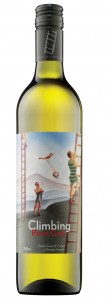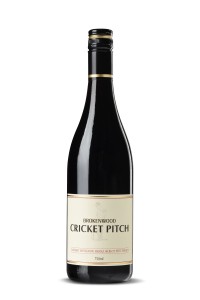
Peter Lehmann’s flagship red, Stonewell shiraz, carries his profile on label; and I can never open a bottle without thinking of Lehmann, his witty quips and his profound influence on the Barossa Valley.
In the end, the company he founded belonged to the Swiss group, Hess Family Estates. But that was an outcome Lehmann engineered ten years ago, in the third and final battle he fought and won in the interests of Barossa grape growers and, indeed, the identity of his own company and the Barossa in general.
The first battle came in 1977 when pastoral company, Dalgety, owner of Saltram Winery, decided not to buy grapes for the 1978 vintage. As winemaker at Saltram, Lehmann refused to abandon the growers. And in a gutsy effort, with support from his wife Margaret, good mate Robert Hesketh and others, established Masterson Wines to buy grapes and make wines under contract at Saltram in vintages 1978 and 1979.
In 1980, when new owners, Seagram, banned contract making at Saltram, Lehmann, under considerable financial duress rushed to build new winery at Tanunda in time for the coming vintage.
Long serving Lehmann winemaker, Andrew Wigan recalls of the vintage, “The winery was still being built around us. The Italian concreters went crazy every time fresh juice was spilt onto the setting concrete. Cellar hands and winemakers alike had to jump from tank to tank because we did not have scaffolds or catwalks”.
Later, Masterson Wines became Barossa Vignerons Pty Ltd and then Peter Lehmann’s Wines Pty Ltd, after Cerebos took a controlling interest.
In 1987, Adelaide based McLeod’s acquired the majority of the company, at the same time folding Hoffmans and Basedows into it. Peter and Margaret Lehmann, via a family trust, held eight per cent of the new entity.
In 1993 Margaret and Peter Lehmann became a vocal minority when McLeod’s decided to offload their interest in the company. But McLeod’s were backed into a corner as they could sell to no one but the Lehmanns. Once again, the Lehmanns placed the family jewels (and Peter’s super money) on the line as they sought to finance a buyout. The outcome, after a short period of intense anxiety for the Lehmanns, was a listing of Peter Lehmann Wines on the Australian stock exchange in 1993 – $5.8 million oversubscribed in just three weeks.
But the listing ultimately exposed the company to a hostile takeover bid by British giant Allied Domecq in 2003. Lehmann, thoroughly aware of the enormous damage wrought to the Australian wine industry by large corporate takeovers, refused to sell his block of shares. He successfully engineered a friendly buyout by Switzerland’s Hess Family Estates – an option he believed offered greater security for the company’s Barossa identity and the grape growers behind it.
Another perhaps less appreciated achievement of Lehmann lay in saving century old winemaking tradition from extinction.
Lehmann had been winemaker at Saltram since 1959. He’d taken the reins from Bryan Dolan when Dolan moved to sister company Stonyfell, replacing Jack Kilgour who’d been making Stonyfell wines since 1932.
Dolan, in turn, had spent his first four years at Saltram working alongside Fred Ludlow before taking over in 1949. And Fred had been there since 1893, making wine for the last fifteen years of his remarkable sixty-year service.
In his time under Dolan, Lehmann continued the tradition of making sturdy, long-lived reds, introduced the flagship “Mamre Brook” red, sourced from a vineyard of that name, and introduced the use of new oak for red wine maturation in 1973.
So, in 1979 when Lehmann walked – with the stranded Barossa growers and offsider, Andrew Wigan – he effectively transplanted the Saltram winemaking culture to his new venture, Masterson Barossa Vignerons. Saltram subsequently fell into a deep hole for fifteen years.
The winemaking achievements of the old Saltram culture can’t be underestimated. In a tasting marking Saltram’s 140th anniversary in 1999 — attended by Bryan and Nigel Dolan and Peter Lehmann – reds from the Ludlow through to Lehmann eras, spanning the years 1946 to 1979, drank remarkably well.
As Saltram lost the plot, Lehmann, even under enormous financial constraints, kept the Barossa red-tradition alive, starting with the 1980 vintage.
Then in 1987, Lehmann, with Andrew Wigan, made the first Peter Lehmann Stonewell Shiraz. Lehmann once described Stonewell to me as, “a continuation of the Mamre Brook dream – aided and abetted by Andrew Wigan”.
This marvellous wine (current release 2008 vintage, retail around $95), remains for me a memento of this exceptional man, son of a Lutheran pastor, winemaker from 1947, businessman and loyal and courageous friend and supporter of hundreds in the Barossa Valley.
Copyright Chris Shanahan 2013
First published 17 July 2013 in The Canberra Times and goodfood.com.au




